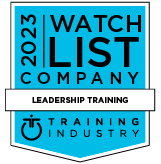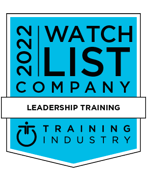What Is Autonomy In The Workplace?

Contents
The outbreak of COVID-19 has exposed the fragility of many organizational structures.
Warren Buffett once said that "only when the tide goes out, you find out who is not wearing a bathing suit."
The COVID-19 pandemic has exposed the fallacy of our pursuit of efficiency and control.
It also provides organizations with the opportunity to end corporate bureaucracy and increase the dose of autonomy at various levels.
Autonomy in the workplace offers severe challenges in ordinary circumstances.
It is challenging to implement and easy to abuse during our current circumstance.
However, if balanced correctly, autonomy can be extremely efficacious to companies as we transition into our new normal.

What Is Workplace Autonomy & What Is Not?
Autonomy means allowing employees to shape their work environment so they can perform to the best of their ability.
Autonomy is when employees have the latitude to make their own decisions with employers providing the necessary tools and guidelines needed to support employee success.
Autonomy is not working in isolation, doing what you want whenever you want, or having a lack of guidance.
An autonomous workplace is based on trust, respect, dependability, and integrity.
While the temptation to monitor work-from-home employees is real, leaders who offer more freedom are having less trouble with the transition.

What Does Science Tell Us?
There is increasing neuroscientific evidence to show that employees are less effective when their work is controlled top-down, whether remote or onsite.
Amy Arnsten, a neuroscience professor at Yale University, studies the importance of feeling in control.
In her research, she reveals that when employees lose their sense of control, like when tasks are micro-dictated to them from higher-ups, the brain's emotional response center causes a decrease in cognitive functioning - which would presumably lead to a drop in productivity.
She further stated, "In my experience, this idea of describing the outcome and letting your employees determine how best to get there often results in a more committed worker and higher quality work."
If you describe the outcome you are aiming to achieve and are clear on the requirements needed, rather than dictating specific actions, you will preserve your employee's autonomy.
This will in turn preserve their perceived sense of control, cognitive function, and ultimately improve their productivity.

A Few Tips To Get Started:
Share the WHY.
Too often, managers tell their team members what they need to do without taking the time to explain why it's necessary or how it fits into the bigger institutional picture.
Rarely does anyone commit to a goal if they don't see why it's desirable to do so in the first place?
As leaders, let's not assume that the WHY behind an ask is as evident to your team as it is to you.
Remember, you sit higher in the organizational chain and have a broader view than your team.
They need you to provide context.
Rather than micromanaging each task, set expectations while giving employees the latitude to decide how to tackle the problem and meet those expectations.
Allowing members of your team to determine how they will accomplish a task creates the feeling of choice and a sense of control that is necessary for someone to be intrinsically motivated.

Keep the Virtual Water Cooler Open.
If there's one area where micromanagers and autonomous leaders may meet, it's at the virtual water cooler, albeit with different agendas.
Since much of the global workforce has been mandated to work from home, virtual happy hours and lunch breaks have become the new norm.
For micromanagers, meetings, however casual in intent, mean more time to monitor for employee engagement, informally grill for productivity, and ultimately steal glances behind an otherwise closed work-from-home curtain.
For autonomous leaders, however, these meetups not only serve as an optional social outlet for employees self-isolating at home; they can also lead to invaluable feedback that might otherwise be missed.
With my own experience, I've come to realize over the years that many of the essential workplace conversations don't take place during scheduled meetings or even in 1:1 performance reviews.
They take place when the pressure is off and guards are down.

Empower and Trust Your Team.
According to the famous author Daniel Pink, "Control leads to compliance; autonomy leads to engagement."
To bring out the best in your teams, you need to utilize their power.
Set a clear goal and trust your team to figure out how to get the work done.
Leaders who trust their employees will be rewarded with an engaged, high-performing team that has likely shared a few innovative ideas along the way. Find out more about trusting your employees and improving autonomy through our Empowerment Shift Program.
Insights

Subscribe to Our Monthly Newsletter!
For managers and talent professionals who truly believe in putting people first, the CARE to Win blog is your gateway to the latest insights on human-centric leadership. Join us as we champion the people first movement.
Need some time apart? Are we emailing you too often? Just give us your feedback, and we promise we’ll respond. We really do care. And if it’s still too much, just unsubscribe. It’s cool.



